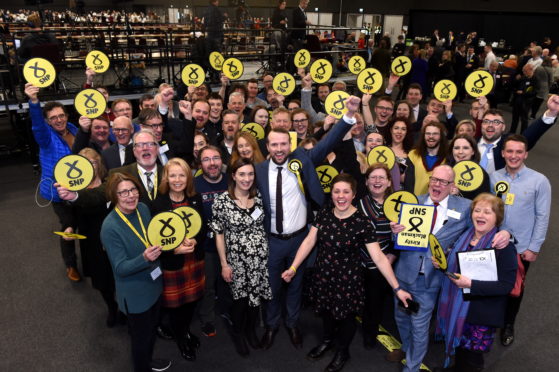The most decisive of election results has left Scotland and the UK facing the most uncertain of futures.
Twin landslides, for opposing parties, on either side of the border, has created a political chasm that will thrust Scotland’s future back to the top of everyone’s agenda.
First Minister Nicola Sturgeon, who spoke about the “diverging” paths of Scotland and the rest of the UK, could even lodge an official request for the Section 30 order required for a second independence referendum within the next few days.
For Scots, the issue of whether or not the nation should become independent, or at least have another chance to settle the debate, has never really disappeared.
It has defined politics in Scotland since the SNP’s victory in the 2011 election for the Scottish Parliament ensured that the first independence referendum was inevitable.
But in the last few years it has taken a back seat on the UK political stage because the rest of the country has been paralysed by Brexit.
That will now change.
Newly-endowed with a significant majority in the Commons, progressing Brexit will appear relatively straight-forward to Boris Johnson this morning compared to the task he faces in responding to the SNP’s sweeping victory in Scotland.
To make matters worse for the Conservative leader, after an election that could hardly have gone better in almost every other respect, his party’s losses in Scotland will leave him short of valued advisers on one of the most sensitive issues he faces.
The 13 Scottish Tory MPs in the last parliament played an important role in influencing the UK Government’s policy towards Scotland, but many of them will no longer be around to help Mr Johnson.
The Tory leader has also left himself little room for manoeuvre by categorically ruling out agreeing to grant the Section 30 order for as long as he is prime minister.
This could play into the hands of the SNP, who will cast him as a prime minister who is ignoring the voice of Scots and denying them a say on their future, if he holds firm.
This line of attack will no doubt continue until the 2021 Holyrood election campaign, potentially boosting the prospects of the kind of pro-independence majority that even many senior unionists in Scotland admit would represent a clear mandate for another referendum.
But while it would be a risky strategy for Mr Johnson to continue to block a referendum in the long-term, in the short-term it would have its attractions.
The Tory leader’s position is secure after the huge vote of confidence he has just received from the electorate in England and Wales, and he can argue that resolving Brexit is the top priority.
His refusal to engage on the independence issue could also force Ms Sturgeon, who is under pressure from her own supporters to secure a referendum, to consider a controversial “Plan B”, such as court action or a “wildcat” referendum.
Whatever unfolds over the coming days, weeks, months and years, the election yesterday seems to have ushered in a new phase in the battle over the nation’s future.










